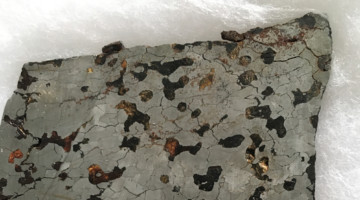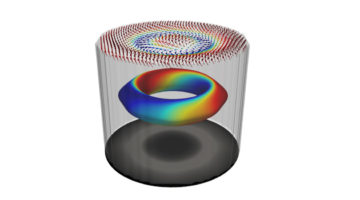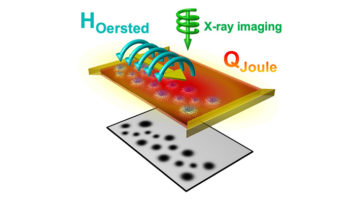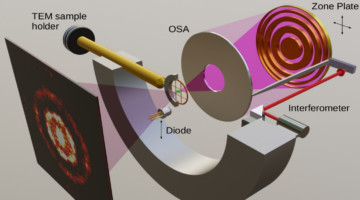Heath Kersell became interested in science as a way to uncover the fundamental building blocks for technologies that improve people’s lives. As an ALS postdoc, he’s researching catalysis and putting together mentorship circles for his fellow postdocs. Read more »
Graphene Outperforms Metal Junctions for 2D Semiconductors
Researchers found that graphene performs ten times better than metal in transmitting a photoinduced current across interfaces with 2D semiconductors. Nanoscale-resolution band-structure measurements provided a deeper understanding of charge transport in these systems and will help in engineering more efficient contacts. Read more »
To Design Truly Compostable Plastic, Scientists Take Cues From Nature
Researchers have designed an enzyme-activated compostable plastic that could diminish microplastics pollution and holds great promise for plastics upcycling. The material can be broken down to its building blocks—small individual molecules called monomers—and then reformed into a new compostable plastic product. Read more »
Meteorites Reveal Magnetic Record of Protoplanet Churn
Researchers detected the signatures of ancient magnetic fields imprinted in the ferromagnetic grains of meteorites that originated from the same parent body. The results, combined with radioisotopic dating of the samples, support an extended time frame for the cooling of molten protoplanetary cores. Read more »
The Spintronics Technology Revolution Could Be Just a Hopfion Away
Scientists have long treated skyrmions as merely 2D objects. Recent studies, however, have suggested that 2D skyrmions could actually be the genesis of a 3D spin pattern called hopfions. Now, a team of researchers has reported the first demonstration and observation of 3D hopfions emerging from skyrmions at the nanoscale in a magnetic system. Read more »
Clency Easterling, Senior Material Specialist
Even before joining the ALS in 2015, Clency was impressed by the scientific mission of the facility. Although his work takes him all over the ALS, he is interested in one particular type of research—find out what has captured his attention. Read more »
Skyrmion Creation and Annihilation Made Simple
Researchers developed a simple approach to writing and deleting skyrmions on demand, using heat and magnetic fields generated by an electrical current, by-products normally considered problematic. The ubiquitous character of these effects, coupled with simplicity of design, offers much-needed scalability and broad applicability. Read more »
A COSMIC Approach to Nanoscale Science
COSMIC, a multipurpose x-ray instrument, has made headway since its launch less than two years ago, with groundbreaking contributions in fields ranging from batteries to biominerals. Its capabilities include world-leading microscopy resolution, extreme chemical sensitivity, and ultrafast scanning speed. Read more »
Ken Baptiste, Electrical Engineering Group Leader
Ken Baptiste has been with the ALS since its origin, and he’s been known for his delicious rum cake that entire time. Along the way, he’s learned about the importance of meticulous planning and discovered a few hidden spaces at the Lab. Read more »
To Speed Discovery, Infrared Microscopy Goes “Off the Grid”
Researchers developed a highly efficient way to collect infrared microscopy data that avoids the use of slow, grid-based raster scans. The method substantially reduces image-acquisition times by autonomously increasing sampling density in regions of interest, facilitating infrared spectromicroscopy of biochemical processes in real time. Read more »
- « Previous Page
- 1
- …
- 17
- 18
- 19
- 20
- 21
- …
- 28
- Next Page »









